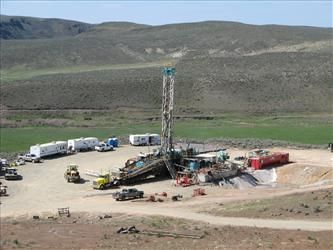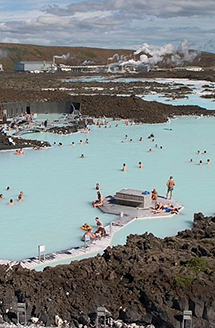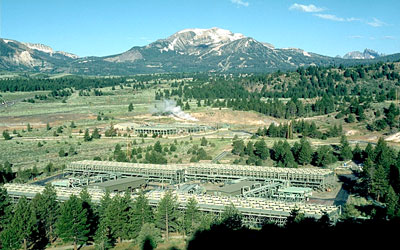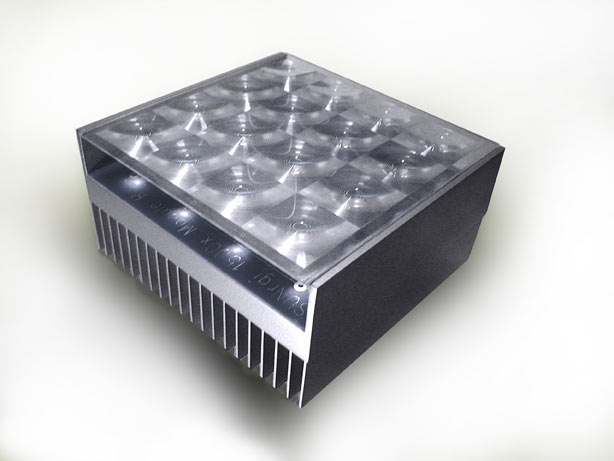Blog Archives
Drilling Commences at Neal Hot Springs

Attribution: US Geothermal
US Geothermal, developer and operator of the Raft River project in Idaho, have commenced resource characterization with an ~1,100 meter exploration hole drilled parallel to the discovery well completed by Chevron in the 1970’s. Since there is a hot spring expressed on the surface, there is a very good chance that a hydrothermal system exists that is capable of supporting commercial geothermal operations. The project calls for 30 days of drilling operations followed by 60 days of testing to determine what sort of resource exists and supply the company with sufficient information to make the decision about further development of the site.
Links:
US Geothermal
Want to Get Your Project Financed?

Then check out the excellent two part series on Foundations of Project Energy Finance over at Cleantech Finance Insider. Bill Lemon has done an excellent job explaining the topics that need to be considered when bringing a project forward for consideration. Remember, it’s all about risk vs. reward. Your job as a developer is to minimize the risks and maximize the rewards, if you can crack that code, you’ll find money for your project.
Links:
Foundations of Project Energy Finance Part 1
Foundations of Project Energy Finance Part 2
Western GeoPower Raises $8.6M

Attribution: Geysir Green Energy
In a previously announced private placement, Geysir Green Energy has consummated the transaction to acquire 13.7% of Western GeoPower raising a $8.6M to continue development of the old Unit 15 project at the Geysers in Northern California. This comes on the heels of successful flow tests of the first production well on the site. Additionally, Geysir has warrants on 9.3M shares exercisable at $0.35/share – in total, Geysir controls 18.8% of WGP’s outstanding shares which could reach 25% if the warrants are exercised.
Links:
Western GeoPower
Geysir Green Energy
Comments are off for this post
Geothermal 101

Attribution: USGS
George Gorski over at Seeking Alpha has posted a nice entry on geothermal entitled “Geothermal 101” – it’s a very good read and has the added benefit of exploring the geothermal supply chain in addition to developers and operators. It succeeds in giving a baseline education on the types of harvest techniques, the development challenges and benefits, and in the publicly traded companies participating in the industry.
Mr. Gorski, if you read this, there is one major correction to your article: Calpine (of San Jose – not San Diego) operates 19 of the 21 plants at The Geysers. The Northern California Power Association operates the other two. Also, two new developer/operators are working in The Geysers, US Renewables is re-powering a the old DWR Bottle Rock plant and Western GeoPower is re-powering the old PG&E Unit 15 plant. There are many more plants in California in the Mammoth, Coso, and Imperial Valley regions. Otherwise, a very good article and highly recommended.
Links: Geothermal 101 at Seeking Alpha
Concentrated Photovoltaic Solar

No, we’re not confused merging PV with Concentrated Solar Thermal, we’re talking about another entry in the solar photovoltaic meets the magnifying glass. There has yet to be a successful commercial entity in this space, but SunRGI might just be it. This Hollywood-based, reasonably well-funded outfit claims 2x improvement over traditional PV installations using a number of approaches, chief among them concentrating solar energy 1,600x and directing it to highly efficient PV cells. SunRGI calls this approach eXtreme Concentrated PhotoVoltaics or XCPV.

If you detect a tone of skepticism in our entry, that’s because we’ve seen this story before and nothing much has come of it. Frankly, it’s not that the technology doesn’t work, it’s that the economics to make it work haven’t been solved yet – SunRGI might have cracked the code – but we’re from Missouri on this one, show us.
The crux of the matter is the triple junction PV cells are incredibly expensive, though very efficient (37.5%) vs. the 21% seen in traditional PV cells. To date, these cells are used in specialty applications that are not cost sensitive, like space applications. Coupled with the cost issue is the cooling issue. As any child with a magnifying glass can tell you, concentrated sunlight gets very hot. Coincidentally, heat degrades the performance of the PV cell.
SunRGI claims to have answers to these questions (CoolMove Technology.) When we see an installation producing electricity over some period of time with a known acquisition, installation, and operation cost, we’ll get excited. Until then, we’ll keep our eyes on this segment as it matures.
Link: SunRGI’s Web Site
7 comments








